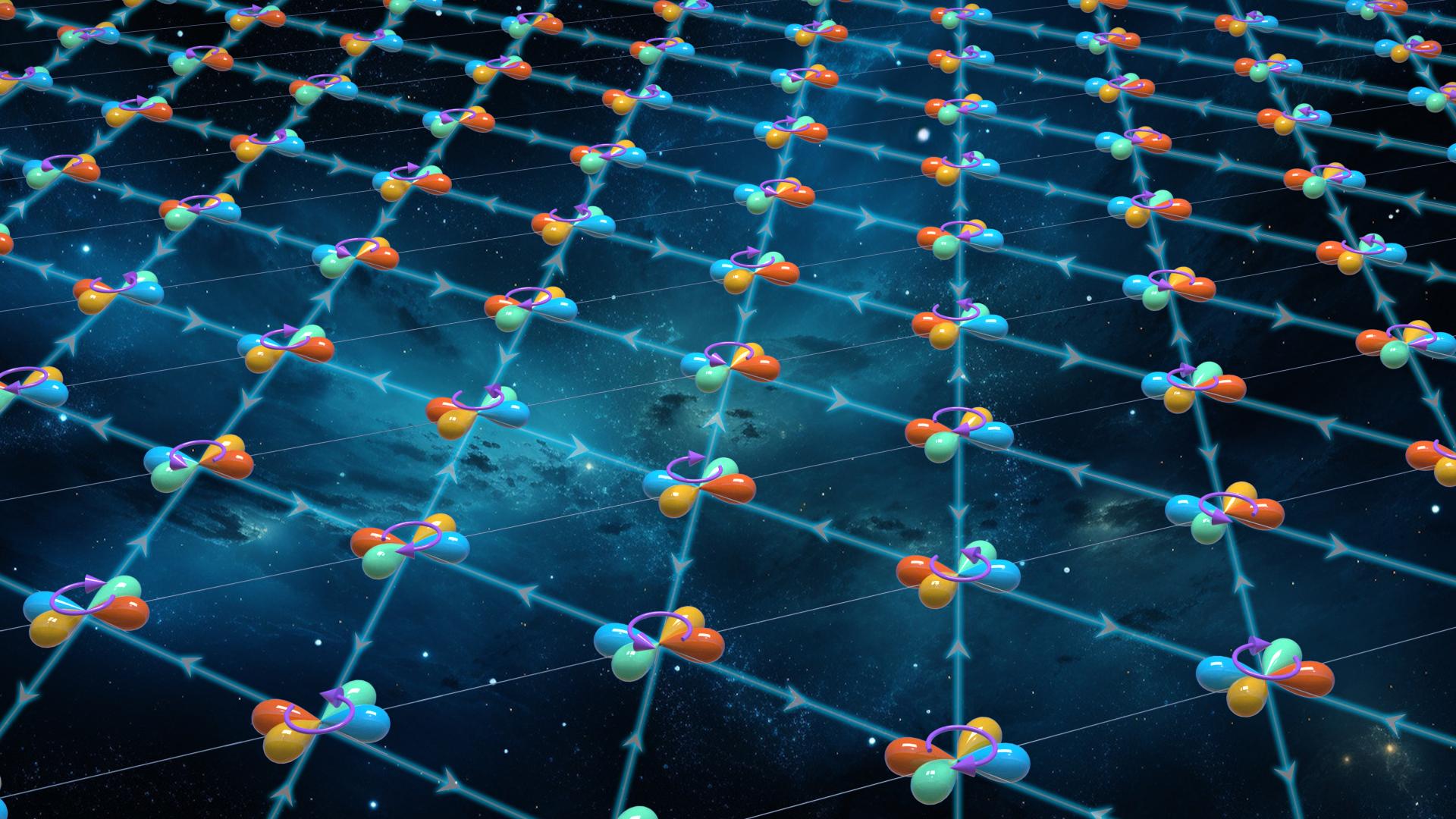Researchers collaborate to make advances in study of orbital physics in optical lattices
2023-11-29
Understanding the intricate properties of materials such as high-temperature superconductors and other strongly correlated systems has long been a challenge for scientists. A prominent feature of these correlated quantum materials is the emergence of intertwining orders with multiple symmetry breakings. The microscopic mechanisms behind these intertwining orders are still widely unexplained, and revealing their fundamental physical properties requires precise adjustments of system parameters and the use of appropriate methods to observe and distinguish different orders.
Due to the complexity of solid-state quantum materials, this can be an exceedingly difficult task. In contrast, ultracold atomic systems, as a new platform, can exhibit novel bosonic quantum phases. Although ultracold atomic systems differ significantly from condensed matter solid-state materials in terms of microscopic mechanisms, they can demonstrate intertwined orders with similar symmetries. This illustrates the universality of physical phenomena across various energy scales.
Optical lattices provide a powerful quantum simulation tool with orbital degrees of freedom, offering precise control over a wide range of physical properties, including quantum statistics, lattice geometry, dimensionality, or interaction strength. Therefore, ultracold atomic systems can be considered a unique platform for exploring novel quantum phases, including stripe ordering, loop currents, pair density waves, and other intertwined orders.

Associate Professor Zhifang Xu’s research team from the Department of Physics at the Southern University of Science and Technology (SUSTech), in collaboration with Professor Andreas Hemmerich from the University of Hamburg, Professor Congjun Wu from Westlake University, and Dr. Zixiang Li, a specially appointed researcher at the Institute of Physics, Chinese Academy of Sciences, have made significant progress in the research of orbital physics in optical lattices. The research group led by Zhifang Xu observed, for the first time in experiments, a Bose-Einstein condensate of p-orbital with broken rotational symmetry induced by interaction on a triangular optical lattice. The system exhibited peculiar exotic stripe and loop current orders.
Their work, entitled “Evidence for Quantum Stripe Ordering in a Triangular Optical Lattice”, has been published in the journal Physical Review Letters.
In this study, the researchers employed a second set of auxiliary triangular optical lattices and band inversion techniques in experiments. They successfully loaded bosonic atoms into the p-orbitals of the triangular optical lattice, achieving a Bose-Einstein condensate. Through continuous active cooling, the coherent time of the condensate was largely extended, such that the metastable p-orbital ground state is closely approached. They finely tuned the intensity of laser beams in three directions, allowing for precise control of the energy imbalance. Time-of-flight imaging techniques revealed corresponding information about quantum phase transitions.
They paid particular attention to the case where the laser beam intensities in the three directions were equal. In this scenario, the single-particle energy band of the p-orbitals exhibited three degenerate energy minima (M points). Due to the influence of interactions and prolonged dissipative dynamical evolution, the condensed atoms tended to accumulate on two out of three M points. Detailed analysis indicated that this state spontaneously breaks the three-fold lattice rotational symmetry, resulting in the emergence of a peculiar quantum stripe phase and loop current order.
The novel p-orbital Bose-Einstein condensate observed in the triangular optical lattice experiment directly confirms the theoretical prediction made by Congjun Wu and collaborators in 2006 [PRL 97, 190406 (2006)]. Furthermore, it provides compelling evidence of spontaneous symmetry breaking and intertwined order formations at ultra-low temperatures.
This discovery illuminates the intricate behaviors of quantum materials, deepening our understanding of their fundamental physics. Moreover, it holds the potential to drive future breakthroughs in the research of unconventional superconductivity, offering promising avenues for scientific advancement in this field.
Xiaoqiong Wang, Associate Researcher of the Shenzhen Institute for Quantum Science and Engineering (SIQSE), and Guangquan Luo, a doctoral student of the Department of Physics at SUSTech, are the first authors of this paper. Associate Professor Zhifang Xu and Professor Andreas Hemmerich are the co-corresponding authors, and SUSTech is the first affiliated unit.
This work was supported by the National Natural Science Foundation of China (NSFC), National Key R&D Program, Guangdong Provincial Key Field R&D Program, and the High-Level Optics Platform of the Department of Physics at SUSTech.
Paper link: https://link.aps.org/doi/10.1103/PhysRevLett.131.226001




